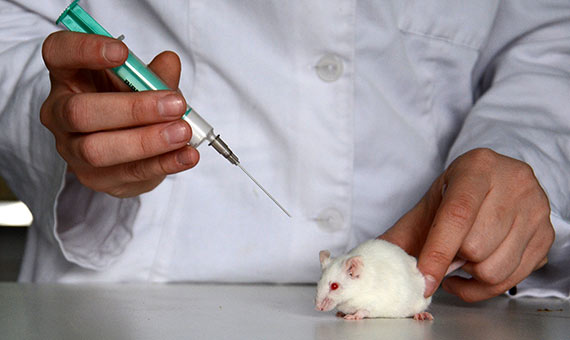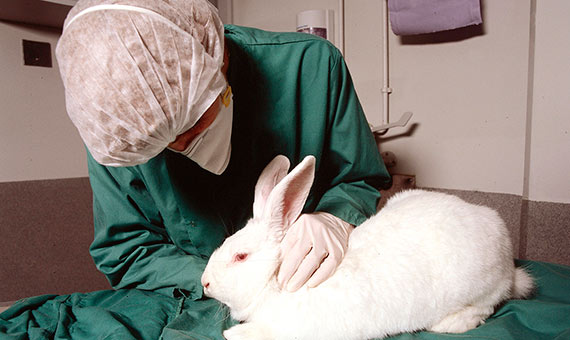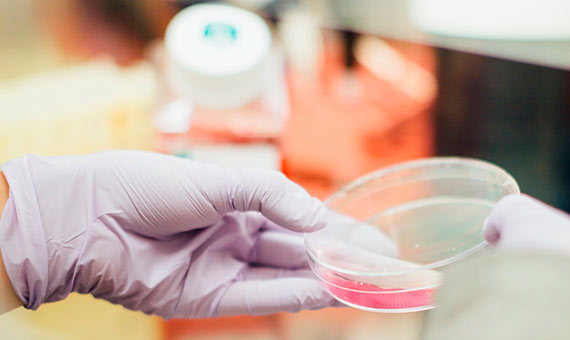Some 115 million animals are used each year in scientific research, mainly in the US, Japan, China, Australia, France, Canada, the United Kingdom, Germany, Taiwan and Brazil, according to a 2005 estimate prepared by the British Union for the Abolition of Vivisection and the Dr. Hadwen Trust for Humane Research. Although other experts question this figure, the fact is that global science continues to depend to a large extent on animal experimentation, a practice that is rejected among certain sectors of society.
In this series of questions and answers we summarize the current state of animal experimentation and examine its future prospects.
What is vivisection? Is it still practiced?
Vivisection is the dissection of live animals for research purposes, originally without anaesthesia when it did not yet exist. In animals it has been used extensively throughout history, giving rise to macabre stories such as the vivisection of a dog carried out by the English polymath Robert Hooke in the seventeenth century to study the functioning of the lungs, which horrified the scientist himself.
In the 19th century, a movement against vivisection began, which led to the enactment in the United Kingdom of the first laws against cruelty to animals. The 1876 version required for the first time the use of anaesthesia in experiments.
Nowadays, the term “vivisection” is not often used in the scientific field and is rarely practiced in its original sense, but activist organizations usually apply it to all experimentation with animals, even with the use of anaesthesia or non-invasive techniques.

continue to be practiced, subject to generalized criteria to minimize the pain and stress. One example is optogenetics, the technique of implanting a fibre optic cable in the brain to stimulate neurons with light. The procedure is not painful for animals and scientists see optogenetics as a fundamental tool for the study of neurological diseases.
What positions do different countries have regarding animal experimentation?
Most developed countries have legislation that seeks to minimize the use of laboratory animals and to limit the pain inflicted on them.
The European Union is governed by Directive 2010/63/EU, adopted into the legislation of each member state and in force since 2013. This European regulation, considered one of the strictest in the world, covers all vertebrates, including their foetal stages in the last third of their development, in addition to the cephalopods. It establishes standards for the care of animals and the facilities involved, which are subject to periodic inspections. In addition, it regulates the evaluation of each proposal to authorize the use of animals and it promotes the research and application of alternatives to animal experimentation.
Perhaps the most demanding regulation in the world is the British one. The Animals (Scientific Procedures) Act of 1986, revised in 2013, requires a cost-benefit analysis as a requirement to authorize animal experiments—something that is also covered by German law—as well as customizing the licenses for researchers and technicians who perform these tests. In the USA, the only relevant federal law is the Animal Welfare Act (AWA) of 1966, which suffers from a serious lack of exclusion for mice and laboratory rats, the animals most used in experimentation, also leaving out birds and fish. According to the bioethics research institute The Hastings Center, this means that the AWA does not cover 95% of the animals used in the laboratories, although these species are covered by other non-federal regulations.

Other countries such as Australia or Brazil also have regulations on the issue. In Canada it is the responsibility of the provincial governments. In Japan, in 2011, a local entity claimed that there was poor compliance with the relevant legal directives. In 2006, China adopted the first comprehensive legislation on the welfare of laboratory animals at the national level, which is complemented by other local and institutional guidelines.
Are cosmetics still being tested on animals?
The popular rejection of the testing of cosmetics on animals has led to changes in the regulations and the stances adopted by some companies. The United Kingdom pioneered the introduction in 1998 of the first legislation that prohibited the testing of cosmetics on animals. In 2013, EU regulations came into force that make these tests illegal, as well as the commercialization of cosmetic products that have been tested on animals. India, Israel, Norway and Switzerland have passed similar laws, while the US and Japan still allow these tests.
One notable case is that of China, which has traditionally required that all cosmetics for sale in the country be tested on animals, which has led many companies in the sector to continue using these practices to access the Chinese market. Since 2014, China has begun to vary its course by introducing certain exemptions, but animal testing is still mandatory for cosmetics manufactured in other countries that are sold in China in physical stores.
Is it possible to do away with animal experimentation?
In 1959, the zoologist William M. S. Russell and the microbiologist Rex L. Burch introduced the concept of the Three Rs (3Rs): Replacement, Reduction and Refinement, the principles that attempt to guide the ethical course of animal experimentation until its eventual disappearance. The current legislation of many countries on animal testing includes references to the 3Rs as the path to follow. For example, reference laboratories for the investigation of alternatives have been established in the EU.

In the case of cosmetics, animal testing has been replaced by tests employing cell cultures, artificial human skin and organ models. In scientific research, there is an attempt to use in vitro systems, biochips and mathematical simulation models. Many scientists support the 3R pathway, but believe that “it is unrealistic to expect this to be possible in every area of scientific research in the immediate future,” according to the Research Defence Society (now called Understanding Animal Research). A 2015 survey by the Pew Research Center in the US revealed that 89% of scientists are in favour of animal experimentation because it is still irreplaceable.
Perhaps the most obvious example of this is preclinical drug trials, where drugs are tested on animals before studies on patients are begun. Currently, it is still impossible to provide in vitro systems or computer models capable of simulating all the complexity of an organism and all the potential effects of a new medication.
Javier Yanes
Comments on this publication